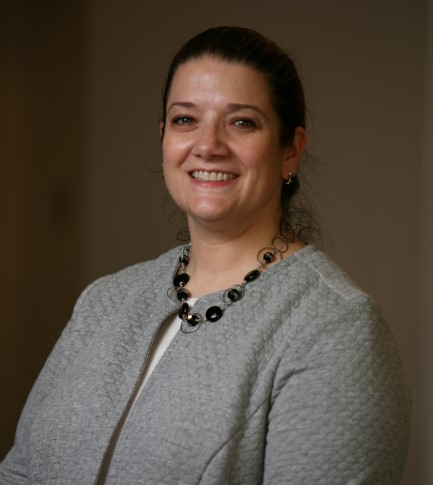Be Bold. Get Inspired. Take Action.
Come off mute. Come on camera. Get your mojo back.
Receive free IIBA updates and exclusive content!
For those of you who read this blog regularly, you know that I hop into Chapter meetings from time-to-time. (One of the many perks of membership harmonization!). This week, I did another unintentional round robin. I was checking out IIBA Chapter Events, and I found three meetings of interest; they all just happened to fall in the same week!

In one of the meetings, the topic centered around asking questions – what are the different types of questions, how can you use questions to break the ice, who should you ask, etc. During the presentation, the presenter indicated that working from home may be influencing how some business analysis practitioners actually ask questions. In a remote environment, do we ask more close-ended questions? (Put a pin in this for just a second.)
During the Q&A portion of the session, the group broke into a conversation that I have heard numerous times over the last 18 months, and I continue to be surprised by it. Specifically, a lot of folks were commenting on how they never use their cameras in their business and team meetings; it isn’t part of their corporate culture. Still others indicated that they only come on camera if they are actually speaking. Still others (and my company falls into this camp) have on camera meetings for the majority of the day.*
I then, of course, extrapolated this conversation into several nights of overnight processing. For starters, I reflected on the Chapter meetings I had attended this week. Which meetings had Board members on camera? What was different about those meetings? Well, for me, in the ones where the Board members initiated and closed the meeting on camera, I felt more welcomed; I felt included; I felt part of the group. For those meetings, the Q&A at the end of the presentation was definitely fuller and richer; people were engaged and wanted to participate. When I juxtaposed that against a meeting earlier in the week, where very few Board members were on camera, no one asked questions; no one wanted to stick around at the end; it felt like punching a clock. Okay, I got my CDUs for that hour.
In my incessant processing, I then considered business and team meetings and what camera use likely could mean for them. I know that I depend on non-verbals. I need to see my team and my stakeholders. I want to see the disappointed frown, the frustrated eye-roll, the insightful smirk, and the heartfelt belly laugh. I want to see when someone has started talking but neglected to take him/her/their self off of mute. All of these silent cues offered by just having the camera on are invaluable aspects of doing our job and maintaining relationships we have long-established.
So, then, I got back to the question of does remote work lead to more close-ended questions. I vote no – not for me. I think that the use of cameras could be a direct link as to why some might feel we are asking more closed questions or potentially not getting all of the details. Without the visuals, we may not know that there is more to be asked, more to be said; we might not even know that “John” was actually answering our questions on mute. He just got frustrated that we weren’t paying attention to him, and he shut down.
Now, with the camera, comes a lot of real fatigue. We need to incorporate time into our days for the mini breaks between meetings. We need to allow for folks to have heads down time, away from their cameras. By both acknowledging that we might be better with the cameras and that we simultaneously need a break from them, we encourage ourselves and others to help support the balance.
So, I encourage you….If your organization is one that doesn’t usually use cameras, why can’t you? What is stopping you? Why can’t you be different? Why can’t you shake the standard? Oftentimes, people are just looking for someone to be the first. Try an experiment. Turn on your camera on for all working meetings for the next week. What was the response? Did people join you? If not, did you encourage them?
As we have seen from the “Big Resignation”, remote work is here to stay. Don’t let muting and the camera be a blocker for your success and your sense of community.
*IMPORTANT: I fully support turning off your camera during a presentation. No one needs to be distracted by your cat walking across your keyboard during the annual sales numbers. Equally, there are instances in which you cannot be on camera because you are eating, or your bandwidth is low. These might be good opportunities to hop on camera, explain the situation, smile, and hop back off. However, if these don’t apply and it is a working meeting (think – stand-up, retrospective, planning, etc.), then the camera seems very applicable.
Thank you, again, to all those Chapters that unknowingly hosted me for their meetings in September!
Be Bold features members, volunteers, and Chapters who are taking bold action. If you have a story to tell or a recommendation for future inclusion, please feel free to reach out to communications.director@gcc.iiba.org.
Are you inspired and want to learn how to embrace change?
Unlock your business analysis potential and grow your career with IIBA Membership. Network with your local community, attend complimentary events around the world, use tools like the Career Action Guide, and more.
About the Author:

Koryn Anderson enjoyed a couple of careers before finding her ultimate one. She has been a business analyst for more than 10 years and is currently a Lead Business Analyst at Baird. She is passionate about the BA discipline, has her CBAP® certification, is Past President of the Southeast Wisconsin Chapter, and is the current Communications Director for the Global Chapter Council.
